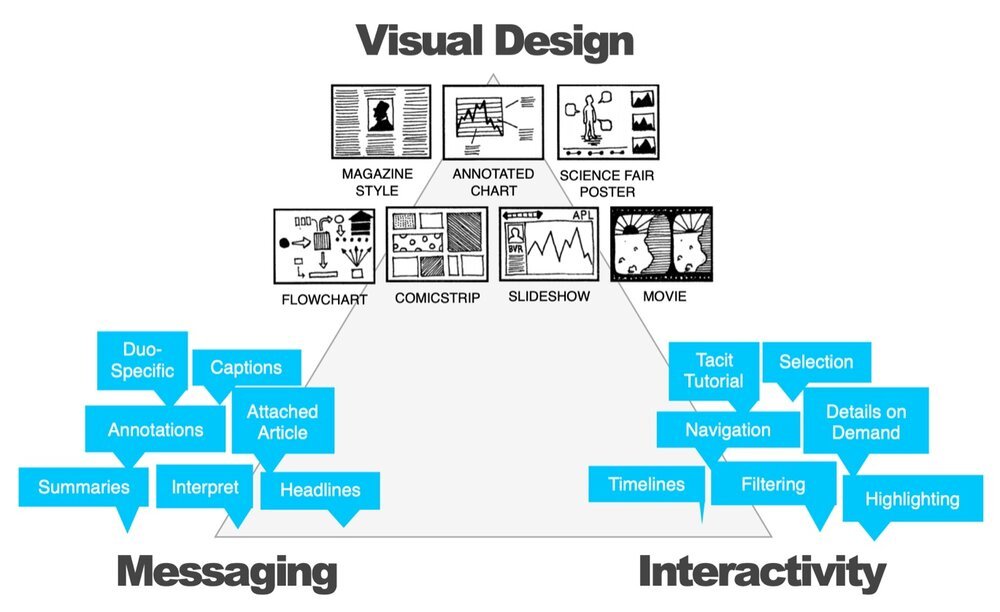Data Storytelling Checklist
Before you send off that data story or presentation, check out these eight guidelines to see if it is ready for prime-time.
For more data storytelling inspiration, here’s a list of 20 world-class examples and our free collection of data storytelling lessons.
1. Data is only one ingredient
Words and images are the glue that holds your story together. Have you connected your data using a narrative flow?
This diagram by data viz guru Jeff Heer shows the multitude of elements that can support an effective data story.
2. Pick the right metrics
Metrics are the characters of your story. Picking the right success metrics requires finding the intersection of what is actionable, accessible, and has a common understanding.
3. Pick the right charts
Picking the right chart requires understanding your data and what you want to emphasize to support your message. ChartChooser is one of many tools to help guide your thinking.
4. Make good visual design choices
Your data story design should try to be as clear and simple as possible to let your message come through without distraction.
This guide by Google is a good starting resource.
5. Strive for less
It is important to appreciate the limited attention your audience will have for your data story. To make the most of it, you’ll want to remove those things that aren’t critical to your story.
6. Teach once, use often
Each visualization asks your audience to learn how to interpret the data. Once you’ve taught them something, use that to your advantage by showing it again.
This data story by The Pudding is an excellent example.
7. Make your data relatable
Connecting to people requires connecting to things they can relate to. Look for ways to explain the data in terms that are approachable.
Here’s an example from The True Size.
8. Summarize and emphasize key points
Finally, your data story needs to include the takeaways. Look for sound-bites that will help your audience carry your message for you.
This example from The New York Times demonstrates how to emphasize your findings.
Juicebox bakes-in data storytelling best practices so you can focus on your message, not technical choices.








